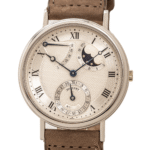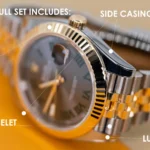Are luxury timepieces truly invincible, or do they need protection like any other precision instrument? From vintage Patek Philippe to modern smartwatches, enthusiasts debate whether watch protectors help or harm their prized possessions. Today, we’re diving deep into the world of watch protection films and screen guards to separate fact from fiction. Whether you’re sporting a classic Rolex watch protection solution or considering options for your Apple Watch, understanding what actually works could save you from costly repairs and heartbreak.
Watch Protectors: The Unsung Heroes of Timepiece Longevity

The debate around watch protectors has raged for decades in horological circles. While purists argue that a timepiece should wear its scratches proudly as battle scars of its journey, pragmatists point to the hefty repair costs that could be avoided with proper protection. The truth, as always, lies somewhere in between.
1. Myth #1: Premium Watches Don’t Need Protection
Perhaps the most dangerous misconception is that high-end watches with sapphire crystals are immune to damage. While sapphire offers exceptional scratch resistance compared to mineral glass, it’s not invincible. A watch protection film provides an additional safeguard against micro-scratches that can accumulate over time, even on premium materials.
Many Rolex watch protection enthusiasts have learned this lesson the hard way—a simple bump against a doorframe can still chip even the most expensive crystal. The repair cost? Often, several hundred dollars for what a $20 protector might have prevented.
2. Myth #2: Protectors Reduce Clarity and Touch Sensitivity
Modern watch protection technology has evolved dramatically. Today’s premium films use advanced optical materials that maintain 99.9% of the original clarity while adding minimal thickness, often less than 0.2mm. The difference is imperceptible to most users, especially with high-quality installations.
For smartwatch owners concerned about touch sensitivity, specialized watch protection films are designed specifically to maintain responsiveness. Many improve the tactile experience by adding an oleophobic coating that reduces fingerprints and improves glide.
3. Myth #3: Installing Protection Always Creates Bubbles
The dreaded bubble effect has scared away many potential watch protection adopters. While DIY installations can indeed be challenging, today’s products often come with installation tools designed to minimize air entrapment. Wet-installation methods, in particular, allow for adjustment during application, virtually eliminating bubbles when done correctly.
Professional installation services for Rolex watch protection and other luxury timepieces use dust-free environments and precision tools to ensure perfect application. The result is nearly invisible protection that preserves the watch’s aesthetic integrity.
4. Myth #4: Protection Films Yellow Over Time

Early watch protection films were indeed prone to discoloration, but modern formulations use UV-resistant polymers specifically designed to maintain clarity for years. Premium options now offer “self-healing” properties that smooth out minor scratches through thermal action.
When choosing Rolex watch protection solutions, look for brands that specifically mention UV stability and anti-yellowing properties. The small premium you’ll pay will ensure your timepiece continues to look pristine without the film becoming an eyesore.
5. Myth #5: Removing Protection Damages Watch Surfaces
Leading watch protection companies use quality products which are designed with safe removal in mind. They use adhesives that maintain strong bonding during use but release cleanly when deliberately removed. The key is following proper removal techniques—generally involving gentle lifting from a corner and slow, even peeling.
For vintage pieces or particularly valuable models, some watch protection film specialists offer professional removal services to ensure zero residue remains on your precious timepiece.
Making the Right Choice for Your Timepiece
Selecting the right watch protection involves balancing several factors: the watch’s material composition, your lifestyle, and your relationship with your timepiece. A deep-sea diver with a tool watch will have different needs than a collector who wears their Rolex watch protection at special occasions only.
The best approach? Consider the watch’s purpose and your attachment to its pristine condition. For daily drivers and active use, a high-quality watch protection film is often a wise investment. For museum-quality pieces that rarely leave the safe, natural aging may be part of their charm and story.
Conclusion
Whatever you decide, remember that the best protection comes from awareness and care. Even the finest watch protection can’t save a timepiece from severe impacts or extreme conditions. Treat your watches with respect, protect them appropriately, and they’ll continue to tell not just time, but your story, for generations to come.






